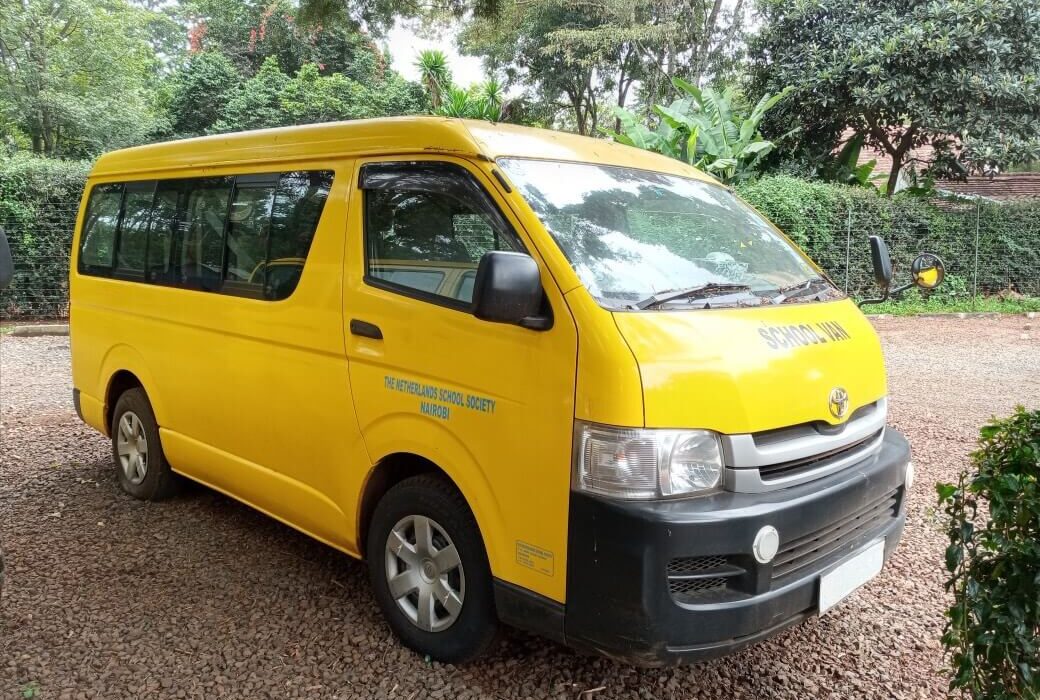In Kenya, ensuring the safety of schoolchildren during their daily commute is a top priority for parents, educators, and policymakers. The National Transport and Safety Authority (NTSA) has introduced stringent regulations under the Draft Traffic (School Transport) Rules 2025 to enhance safety standards for school buses and vans. A critical component of these regulations is the NTSA school bus registration fee, which ensures compliance with safety and operational standards. This article dives deep into the registration process, fees, safety standards, and practical implications for school transport providers in Kenya, offering a comprehensive guide for stakeholders.
Understanding the NTSA School Bus Registration Framework
The NTSA, under the Traffic (School Transport) Rules 2025, has established a robust framework to regulate school transport vehicles. These rules aim to reduce accidents, ensure child safety, and standardize operations across the country. The registration process is a cornerstone of this framework, requiring school transport providers to meet specific criteria and pay designated fees to obtain or renew licenses.
Why School Bus Registration Matters
School bus registration is not just a bureaucratic requirement; it’s a commitment to safety and accountability. The NTSA’s regulations address the rising cases of road accidents involving school vehicles. By enforcing registration and compliance, the NTSA ensures that school buses meet safety standards, drivers are qualified, and vehicles are regularly inspected.
- Child Safety: Ensures vehicles are equipped with safety features like seat belts and fire extinguishers.
- Regulatory Compliance: Aligns with the NTSA Act, Basic Education Act, and Kenya Vision 2030.
- Public Confidence: Restores trust in school transport systems through strict oversight.
Key Objectives of the 2025 Regulations
The Draft Traffic (School Transport) Rules 2025 aim to:
- Standardize vehicle safety features and operational protocols.
- Enforce strict licensing for drivers and attendants.
- Mandate regular vehicle inspections to maintain roadworthiness.
- Introduce penalties for non-compliance to deter violations.
NTSA School Bus Registration Fees: Breakdown and Details
The NTSA school bus registration fee is outlined in the First Schedule (s. 26) of the Traffic (School Transport) Rules 2025. These fees are designed to be affordable yet sufficient to support the administrative and enforcement processes of the NTSA.
Fee Structure
According to the First Schedule, the fees for school transport providers and vehicles are as follows:
- Application and Renewal Fee for School Transport Provider License (per year): Kshs 2,000
- Application and Renewal for School Vehicle Road License (per year): Kshs 1,500
These fees apply to both initial applications and annual renewals, ensuring that all school transport providers maintain active licenses. The costs are modest compared to the safety benefits, making compliance accessible for schools and private operators.
Payment Process
To register or renew a school bus license, providers must:
- Submit an Application: Apply through the NTSA’s online portal or designated offices.
- Provide Documentation: Include vehicle inspection reports, insurance certificates, and driver qualifications.
- Pay the Fee: Use approved payment methods, such as mobile money (e.g., M-Pesa) or bank transfers, via the NTSA’s payment system.
- Receive License: Upon approval, the NTSA issues a license valid for one year.
Additional Costs to Consider
While the registration fees are straightforward, school transport providers may incur additional costs to meet NTSA standards:
- Vehicle Modifications: Installing safety features like speed limiters, telematics systems, and fire extinguishers.
- Inspections: Bi-annual inspections to ensure compliance with safety standards.
- Training: Driver and attendant training programs to meet licensing requirements.
Safety Standards for School Buses: The Second Schedule
The Second Schedule of the Draft Traffic (School Transport) Rules 2025 outlines mandatory standards for school buses. These standards, set by the Kenya Bureau of Standards (KEBS), ensure that vehicles are safe, reliable, and child-friendly.
Key Standards for School Buses
The following standards are mandatory for all school transport vehicles:
- KS 2295-1 and KS 2295-2: Maximum road speed limiters for motor vehicles, covering performance, installation, and component requirements. These limiters cap speeds at 80 km/h to prevent overspeeding.
- KS 372: Specifications for passenger vehicle body construction, ensuring structural integrity and child-friendly designs.
- KS 2092: First aid kit specifications, requiring vehicles to carry accessible and compliant kits.
- KS 2517: Portable fire extinguishers and fire blankets, ensuring at least one accessible extinguisher is on board.
- DKS 924: Specifications for motor vehicle chevrons, decals, and strips for high visibility.
- KS 1820:2005: Retro-reflective marking tapes for enhanced visibility during low-light conditions.
Vehicle Design and Features
Beyond the listed standards, the NTSA mandates specific design features:
- Yellow Paint (Colour Code FFD800): All school buses must be painted yellow for easy identification.
- Signage: Vehicles must display “SCHOOL BUS” on the front and rear, and “DO NOT PASS WHEN RED LIGHTS ARE FLASHING” in black block letters (at least 8 inches high) at the rear.
- Complaints Phone Number: Must be displayed with the phrase “IN CASE VEHICLE BEING DRIVEN RECKLESSLY CALL.”
- Safety Equipment: Functional seat belts designed for children, dual red-light indicators, stop signal arms, and mirrors for adequate visibility.
- Telematics System: A KEBS-approved system to track vehicle location and performance.
Operational Guidelines
The NTSA also sets operational protocols to ensure safety:
- Operating Hours: School buses may only operate between 5 a.m. and 10 p.m.
- Passenger Limits: No standing passengers; each student must have a designated seat.
- Speed Limits: Maximum speed of 80 km/h, enforced by speed limiters.
- Maintenance Records: Providers must maintain service records for two years.
Licensing Requirements for Drivers and Attendants
The NTSA places significant emphasis on the qualifications of school bus drivers and attendants to ensure child safety.
Driver Requirements
Drivers must:
- Hold a valid NTSA license for the specific vehicle category.
- Pass annual criminal record checks, with disqualifications for convictions related to child abuse or driving under the influence.
- Undergo annual medical tests to confirm fitness to drive.
- Conduct pre-trip and post-trip vehicle checks to ensure roadworthiness and that no child is left on board.
Attendant Requirements
Attendants must:
- Possess a valid Public Service Vehicle (PSV) conductor license issued by the NTSA.
- Pass annual criminal record assessments, with disqualifications for child abuse or violent behavior convictions.
- Assist in loading and unloading students, ensure seat belt compliance, and maintain discipline on board.
Crossing Guards
The 2025 rules introduce the use of crossing guards at school entry and exit points to manage traffic and ensure safe pedestrian crossings for students.
Public Participation and Feedback
The NTSA has actively sought public input on the Draft Traffic (School Transport) Rules 2025. Public participation forums have been held across counties, including Nairobi, Mombasa, Kisumu, and Nakuru, to gather feedback from stakeholders. The public was invited to submit comments within 14 days of the Gazette Notice’s publication on June 18, 2025. This inclusive approach ensures that the regulations reflect the needs and concerns of parents, schools, and transport providers.
Challenges and Considerations for School Transport Providers
While the NTSA’s regulations are well-intentioned, they present challenges for schools and private operators:
- Cost Implications: Smaller schools may struggle with the costs of vehicle modifications and licensing fees.
- Compliance Burden: Bi-annual inspections and record-keeping requirements demand significant administrative effort.
- Driver and Attendant Training: Ensuring all staff meet NTSA qualifications may require additional investment in training programs.
Strategies to Overcome Challenges
To address these challenges, providers can:
- Seek Subsidies: Advocate for government or donor support to offset compliance costs.
- Collaborate with Inspection Centers: Partner with NTSA-approved centers for cost-effective inspections.
- Invest in Training: Work with certified trainers to ensure drivers and attendants meet licensing requirements.
The Road Ahead: Impact on Kenyan Schools and Communities
The NTSA school bus registration fee and associated regulations mark a significant step toward safer school transport in Kenya. By enforcing strict safety standards, licensing requirements, and operational protocols, the NTSA aims to reduce accidents and protect schoolchildren. The modest fees of Kshs 2,000 for provider licenses and Kshs 1,500 for vehicle licenses ensure accessibility while supporting regulatory enforcement.
Benefits for Stakeholders
- Parents: Gain peace of mind knowing their children travel in safe, compliant vehicles.
- Schools: Enhance their reputation by adhering to high safety standards.
- Transport Providers: Benefit from clear guidelines and standardized operations.
- Students: Travel in safer, more comfortable vehicles with qualified drivers and attendants.
Future Outlook
As the NTSA continues to refine these regulations based on public feedback, we can expect further improvements in school transport safety. The integration of telematics systems and speed limiters aligns with global best practices, positioning Kenya as a leader in child safety within the region. Continued collaboration between the NTSA, schools, and communities will be crucial to sustaining these gains.
The NTSA school bus registration fee and the Draft Traffic (School Transport) Rules 2025 represent a transformative approach to school transport safety in Kenya. By combining affordable fees, rigorous safety standards, and strict licensing requirements, the NTSA is addressing long-standing concerns about road safety for schoolchildren. For schools and transport providers, compliance is not just a legal obligation but a moral imperative to protect Kenya’s future generation. As these regulations take effect, stakeholders must work together to ensure seamless implementation, prioritizing the safety and well-being of every child on the road.
For more information on the registration process or to verify compliance, visit the NTSA’s official website or contact their offices directly. Stay informed and keep safety first!





